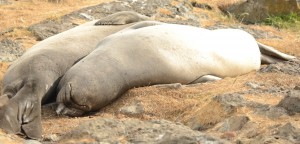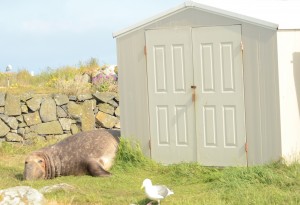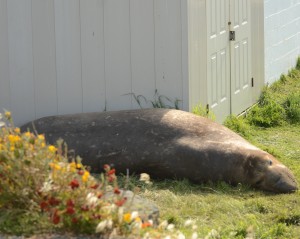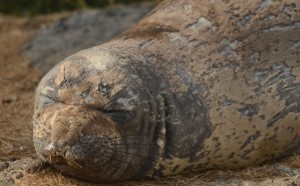I had trouble with a temprarily unavailable log-in page when I went to to post my log blog last night, so am posting the two days together now.
The westerly blew throughout both days and fog obstructed the views. Yesterday it cleared after 4 PM and by 6 PM, thick fog had moved back in and visibility was back down to several hundred meters. Today it cleared earlier and stayed clear until sunset (at least). Wind speed both days varied between 10 and 25 knots over the course of the day and in varied direction from west-southwest to west. Yesterday the barometer went up to 1015 hPa from 1014 and then started dropping. Today, it was steady until noon and then it started dropping going as far as 1010hPA by 8 PM. The forecast for today was correct: strong westerly wind warnings, fog “patches” and sunshine. Tomorrow the wind warning has been upgraded to a gales and the rest remains the same.
Six whale watching vessels were observed working in the Ecological Reserve yesterday and today I saw three. They all abided by the rules and regulations more or less. Some boats/skippers may be used to pushing the distance limits but I did not observe negative impacts.
I was lucky enough to see Chunk ghosting around the island from the top of the light tower and it was a surreal sight. He started out in the surge channel in front of the science house and swam around anti-clockwise. If it wasn’t for his white scar, I might have missed him, as it was a bit foggy. He only came up to look around and make a right angle turn to avoid a reef, once. He moved elegantly with hind flippers sweeping side to side, ever so slightly and propelling his huge mass along at a good speed. He seemed to purposefully seek out the kelp and sweep through it. The pale grey, submarine shape shifted in and out of the kelp, hugging the coastline, in shallow water. How different this must be from his normal habitat offshore and in the deep. If that is what our Canadian elephant actually does. It would be nice to know where they go when they are not here.
I was glad that I topped up the freshwater the day before yesterday as Floyd decided to sleep right up against the freshwater tank-house yesterday and today. It would have been a challenge to get in and out to check water-levels with his head jammed in between the Diefenbunker and the tank-house.
The two-year-old northern elephant seals that looked so bad before moulting are now starting to look much better as their moult progresses. This one still looks a bit scabby but no more oozing and bleeding sores.
According to my favorite vet, Marty Haulena of the Vancouver Aquarium (Who else knows about such things?), “when there are deep cracks, bleeding and large ulcers it becomes part of a syndrome known as northern elephant sealskin diseases (NESSD) and that syndrome is not well understood though it is likely a combination of secondary bacterial infection, immune-mediated disease, and endocrine problems. It is most likely to occur in yearlings during their first or second major moult. If minor they can survive” Thanks Marty for letting me know.

These two have been moulting, losing weight and sleeping more and more since they arrived a couple of months ago.
Thursday was census day and here are the results.
Northern Elephant Seals 22 (including 16 on Great Race)
Harbour Seals 110
California Sea lions 19
Northern or Stellers Sea lions 25 (One male with a neck ring, one female with a two year old, is branded but could not see brand.)
River Otter 1
Sea Otter 1
Canada Geese 23 (+ 26 goslings, one gosling missing) (note one adult (non-breeding) taken by eagles)
Harlequin Ducks 0 (left last week)
Pelagic Cormorants 16
Double Crested Cormorants 3
Bald Eagle 1 adults, 2 sub-adults
Black Oystercatchers 10
Kildeer 2
Pigeon Guillemots 211
Glaucous-winged Gulls total 444 (436 adults in nesting areas; 8 sub-adults in roosting/resting area) Some gulls starting laying and incubating.
There were no visitors either day and chores were routine. I leave for Portugal tomorrow Christine will be doing the blog. Back June 7th.



